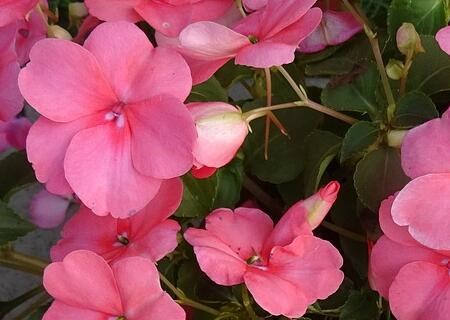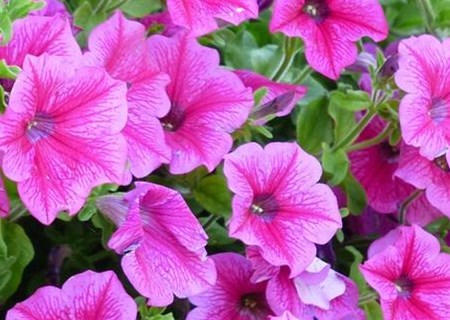What are the seed planting methods of Lantern Flower (also known as upside down Admiralty)? How do you trim it? What are the effects and effects?
Lantern cage flower, also known as inverted bell, likes cool, humid climate environment. It has a wide variety of colors, mainly red, purple, white three varieties. People like to plant it very much, so do you know what methods are used to plant seeds of lamp flowers? How do you trim it? What are the effects and functions?

Seed planting method of Chinese lantern flower
cutting propagation
Often in late spring and early autumn with the branches of the year for young cuttings, or in early spring with last year's branches for old cuttings. Is used for cuttage nutrient soil or river sand, clay and other materials. It is difficult to get ideal cuttage matrix due to family cuttage conditions. It is recommended to use the prepared and disinfected cuttage matrix provided by this station; medium coarse river sand is also OK, but it should be washed with water several times before use. Sea sand and river sand in saline-alkali areas should not be used because they are not suitable for the growth of flowers and plants.
When young shoots were cut, strong branches were selected as cuttings from late spring to early autumn when the plants grew vigorously. After cutting the branches, select the sturdy parts and cut them into sections 5 to 15 cm long, each section with more than 3 leaf nodes. When cutting cuttings, it is necessary to pay attention to that the upper cut is cut flat at about 1 cm above the uppermost leaf node, and the lower cut is cut obliquely at about 0.5 cm below the lowermost leaf node. The upper and lower cuts should be flat (the knife should be sharp).
For hardwood cuttings, after the temperature rises in early spring, select last year's healthy branches to do cuttings. Each cutting usually retains 3~4 nodes, and the cutting method is the same as that of young cuttings. The optimum temperature for cuttings rooting was 20℃~30℃, lower than 20℃, cuttings rooting was difficult and slow, higher than 30℃, upper and lower cuttings were easy to be infected and rotted, and the higher the temperature, the greater the proportion of rot. After cutting encounter low temperature, insulation measures are mainly used to cut the pot or container wrapped with film; cutting temperature is too high temperature, cooling measures are mainly to cut shade, to cover 50~80% of the sun, at the same time, to cut spray, 3~5 times a day, sunny temperature higher spray times are more, rainy days lower temperature is larger, spray times are less or not spray.
The relative humidity of the air must be maintained at 75 - 85% after cutting. The basic requirement of cuttings rooting is to ensure that cuttings are fresh and capable of photosynthesis to produce rooting substances before rooting. However, the cuttings without roots cannot absorb enough water to maintain the water balance in their bodies. Therefore, it is necessary to reduce the evaporation of water from cuttings by spraying: under the condition of shade, spray the cuttings 3~5 times a day. The higher the temperature in sunny days, the more the spraying times. The lower the temperature in rainy days, the less or no spraying times. However, excessive spraying, cuttings are easily infected and rotted by germs, because many kinds of germs exist in water. Cuttage propagation can not be separated from sunlight, because cuttings continue to carry out photosynthesis to produce nutrients and rooting substances to supply their rooting needs. However, the stronger the light, the higher the temperature in the cutting body, the more vigorous the transpiration of the cutting, the more water consumed, which is not conducive to the survival of the cutting. Therefore, after cuttage, the sun must be blocked by 50~80%. After the roots grow out, the shading net is gradually removed: the shading net is removed at 4:00 pm every day on a sunny day, and the shading net is covered before 9:00 am the next day.
layering propagation
Take healthy branches and peel off a circle of bark from about 15 to 30 cm below the top. The width of the wound after peeling is about 1 cm, and the depth is limited to just peeling off the skin. Cut a piece of film 10~20 cm long and 5~8 cm wide, put some wet garden soil on it, wrap up the girdling part like a wound, tighten the upper and lower ends of the film, and bulge in the middle. Rooting takes about four to six weeks. After taking root, cut off the roots along the branches and become a new plant.
Transplanting on plate
When placing small seedlings in pots or turning large plants that have been cultivated for several years, first put 2~3 cm thick coarse grain matrix as a filter layer at the bottom of the pot, sprinkle a layer of fully decomposed organic fertilizer as a base fertilizer, the thickness is about 1~2 cm, and then cover a thin layer of matrix, about 1~2 cm thick, and then put in the plants to separate the fertilizer from the roots to avoid burning the roots. The substrate for the upper pot can be selected from the following: vegetable garden soil: slag =3:1; or garden soil: medium coarse river sand: sawdust (Ru residue)=4:1:2; or paddy soil, pond mud, rotten leaf soil. After finishing the basin, pour a permeable water, and put it in a shady environment for a week. When transplanting seedlings, dig planting holes first, sprinkle a layer of organic fertilizer at the bottom of planting holes as base fertilizer (base fertilizer), the thickness is about 4~6 cm, then cover a layer of soil and put seedlings in order to separate fertilizer from roots and avoid burning roots.
How to trim the lamp
seedling pruning
The so-called seedling pruning is to shape the flowers before they are formed. The main goal is to cultivate a beautiful plant shape in conservation, and different pruning methods should be determined according to the growth characteristics of different varieties.
Cross-shaped pruning method This method is suitable for small branches open angle (branch lift) varieties, such as 'purple hammer' and so on. When the seedlings are higher than 20 cm, they should be topped to promote the germination of new branches. Because the lateral branches are generally symmetrical, so in pruning to retain the upper two symmetrical branches, the lower branches, all erased. Lateral branches grow to about 10 cm need to top, wait for new branches to grow after its growth is good, pay attention to the inward, downward growth of lateral branches cut off at any time. After pruning, the potted plants with the same length and 15 cm to 18 cm in diameter retain 8 to 10 flowering branches.
tower pruning
This method is suitable for varieties with large lateral branch opening angle (branch extension) and strong growth, such as 'white calyx' and 'girl skirt'. When the plant type is small, do not top it. When it grows to 20 cm, all branches and leaves below 10 cm will be cut off. After lateral branches grow, in order to avoid overlapping branches, the method of stratified pruning can be adopted. Each layer leaves a symmetrical branch, removes a pair of symmetrical branches, and then leaves a layer of symmetrical branches, and so on.
natural pruning
Suitable for creeping branches, weak varieties and large flowers, double petals varieties. Trim it to its natural shape according to its shape. When the seedlings grow to 30~40 cm, remove the top of the trunk, remove the adjacent overlapping branches, cut short the long branches, and promote branching. Cut off the lateral branches growing inward at any time to promote beautiful plant types.
florescence shaping pruning
In the northern natural environment, the flowering period is from April to July. Therefore, pruning should be stopped in late March in spring to ensure flowering in mid-April. Because the flowers bloom at the top of the lamp cage, the branches will continue to elongate. When the branches grow to a certain length, they should top, and the new branches can continue to bloom. When flowering, the branchlets and leaves in the center of the plant should be cut off at any time to avoid consuming nutrients and facilitate ventilation and light transmission.
post-flowering pruning
When the temperature rises to 30℃ in July, the plant will enter semi-dormancy state. Leaves will gradually appear weak, at this time need to be heavy pruning, to reduce nutrient consumption, conducive to safe summer. All the longer branches are cut off, leaving only the backbone branches, and all the old leaves are removed and placed in the shade. If there are buds sprouting at this time, they should also be removed in time. New branches will grow in September, when the plant type will be more compact.
What are the effects and functions of the lamp cage flower
The flower enters the kidney meridian and has a good therapeutic effect on some symptoms caused by kidney deficiency and kidney deficiency. It can be used as an auxiliary treatment of traditional Chinese medicine or western medicine at the same time. Moreover, the side effect of the flower is very small and can be used as a natural medicinal material.
Time: 2019-03-18 Click:
- Prev

What are the seed planting methods of herbaceous flowers and colorful impatiens? What kind of growth habits do you have?
Colorful impatiens are annual herbaceous flowers. Flowers bisexual, zygomorphic, axillary or integrated by several flowers in racemes. The colors are red, pink, purple, white and so on. Widely planted in China, what are the seed planting methods of colorful impatiens? Do you have any growth habits?
- Next

What are the seed planting methods of perennial herbaceous petunia? How to apply fertilizer? How many years can you live?
Petunia, Bidong eggplant, perennial herbs. The flower shape is very beautiful, the florescence is from April to defrost, the capsule and the seed are fine. It is distributed in South America and is now widely cultivated in many countries. So do you know what are the seed planting methods of petunia? How to apply fertilizer? How many years can you live? Seed planting method of Petunia
Related
- Fuxing push coffee new agricultural production and marketing class: lack of small-scale processing plants
- Jujube rice field leisure farm deep ploughing Yilan for five years to create a space for organic food and play
- Nongyu Farm-A trial of organic papaya for brave women with advanced technology
- Four points for attention in the prevention and control of diseases and insect pests of edible fungi
- How to add nutrient solution to Edible Fungi
- Is there any good way to control edible fungus mites?
- Open Inoculation Technology of Edible Fungi
- Is there any clever way to use fertilizer for edible fungus in winter?
- What agents are used to kill the pathogens of edible fungi in the mushroom shed?
- Rapid drying of Edible Fungi

